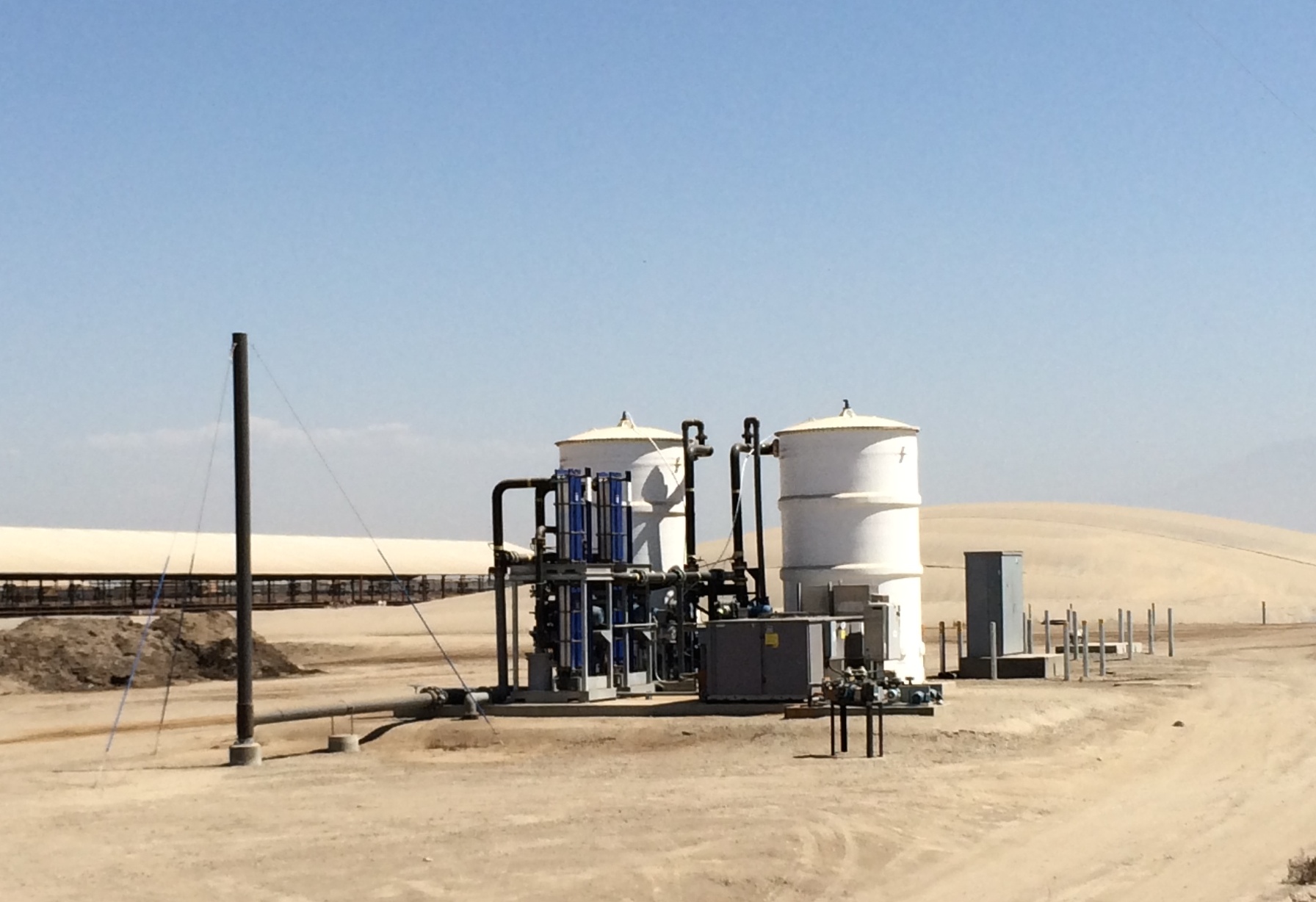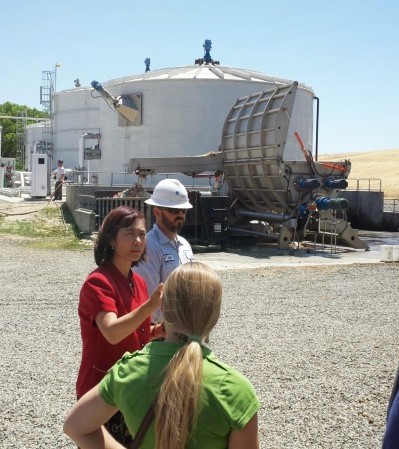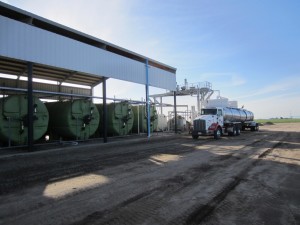
Pictured above: California Bioenergy LLC’s (CalBio) Old River project. At 2 MW, it is currently the largest electricity-generating digester on a California dairy. It is a covered lagoon digester, allowing it to easily treat highly liquid manure which is common in California’s flush dairies.
Recently, Sustainable Conservation has been assessing the evolution of anaerobic digesters on dairy farms in California. Digesters turn methane from cow manure into clean, renewable energy and prevent harmful greenhouse gases from escaping into the atmosphere. Sustainable Conservation began looking at digesters 15 years ago as a way of addressing challenges surrounding climate change and air & water quality, while also generating revenue from waste. Despite the fact that there are still barriers to more widespread use, the future of dairy digesters looks hopeful.
 |
| Professor Ruihong Zhang gives a tour of UC Davis’ new thermophilic digester, designed by Professor Zhang and built by CleanWorld. The digester is designed to co-digest organic food waste and animal waste, although it is not yet using dairy manure. It will also eventually convert its effluent into soil amendments. |
Fifteen years ago, three major areas lacked the support needed to further the use of digesters:
1. California-specific research and experience with digesters.
2. Funding to cover the significant up-front construction and equipment costs for this new technology.
3. A regulatory environment supportive of biogas production.
Sustainable Conservation worked with partners to address each of these areas, including by:
• Supporting and helping implement net metering legislation in 2002 so that dairies received credit for the energy they produced.
• Conducting research to identify gaps, as compiled in a 2005 report entitled “Biomethane from Dairy Waste: A Sourcebook for the Production and Use of Renewable Natural Gas in California.”
• Working with Western United Dairymen and other partners to form the Dairy Power Production Program to address the funding issue. Many of the second wave of digesters built in California during the early-mid 2000’s received funding through this program.
• Supporting policies and regulations encouraging the use of biogas, such as AB 32, and those promoting distribution of cap-and-trade funds to include dairy digesters, such as SB 1122.
• Highlighting the importance of a consolidated permitting process to bring digesters online more quickly, while keeping proper environmental review controls in place.
This work has helped set the stage for the development of the 16 dairy digesters operating in California today. And some very interesting trends are emerging that will help shape the future of dairy digesters.
Unlike fifteen years ago, there is greater appreciation of the fact that most dairy producers do not want to operate an energy generation facility. This has given rise to new business models where third parties design, develop and operate digesters. With this model, dairy producers focus on what they care about – growing feed, caring for their cows and producing milk – while receiving benefits ranging from reduced energy costs to a share of the digester revenue.
| A Power Purchase Agreement (PPA) is a contract between a distributed energy generator and an electricity buyer and sets the price for digester-generated energy. The PPA defines the terms for the sale of electricity between the two parties and acts as the principal agreement defining the revenue of a generating project. |
Focus is also shifting to generating new revenue streams in addition to those linked to energy production. Due primarily to the low prices offered under current Power Purchase Agreements (PPAs), developers now look at digester byproducts as an important revenue source for generating an acceptable return on investment. Consequently, there are more investments in developing products derived from digesters, particularly those related to liquid and solid soil amendments.
The possibility of these products hitting the market is particularly exciting, because it is a clear win-win: by converting manure to a form that can be exported off a farm, we can develop new revenue streams while reducing impacts to groundwater quality.
An additional benefit is the potential to replace synthetic fertilizers with organic material, ultimately mitigating some of the environmental and social impacts related to synthetic fertilizers.
There is also a decent amount of political and regulatory convergence on the importance of biomass – including dairy waste – in ensuring California’s energy security. Providing the right financial incentives and addressing inefficiencies in the permitting process will help spur increased interest from dairy producers, digester developers and investors. A separate post at a later date will address regulation in further detail.
Today, we see dairy producers more open to digesters, increased buzz surrounding the potential return-on-investment from digesters and signs that policymakers and regulators are interested in incentivizing bioenergy. And while these trends all point to a bright future for dairy digesters in California, the question remains: how soon will we get there?

